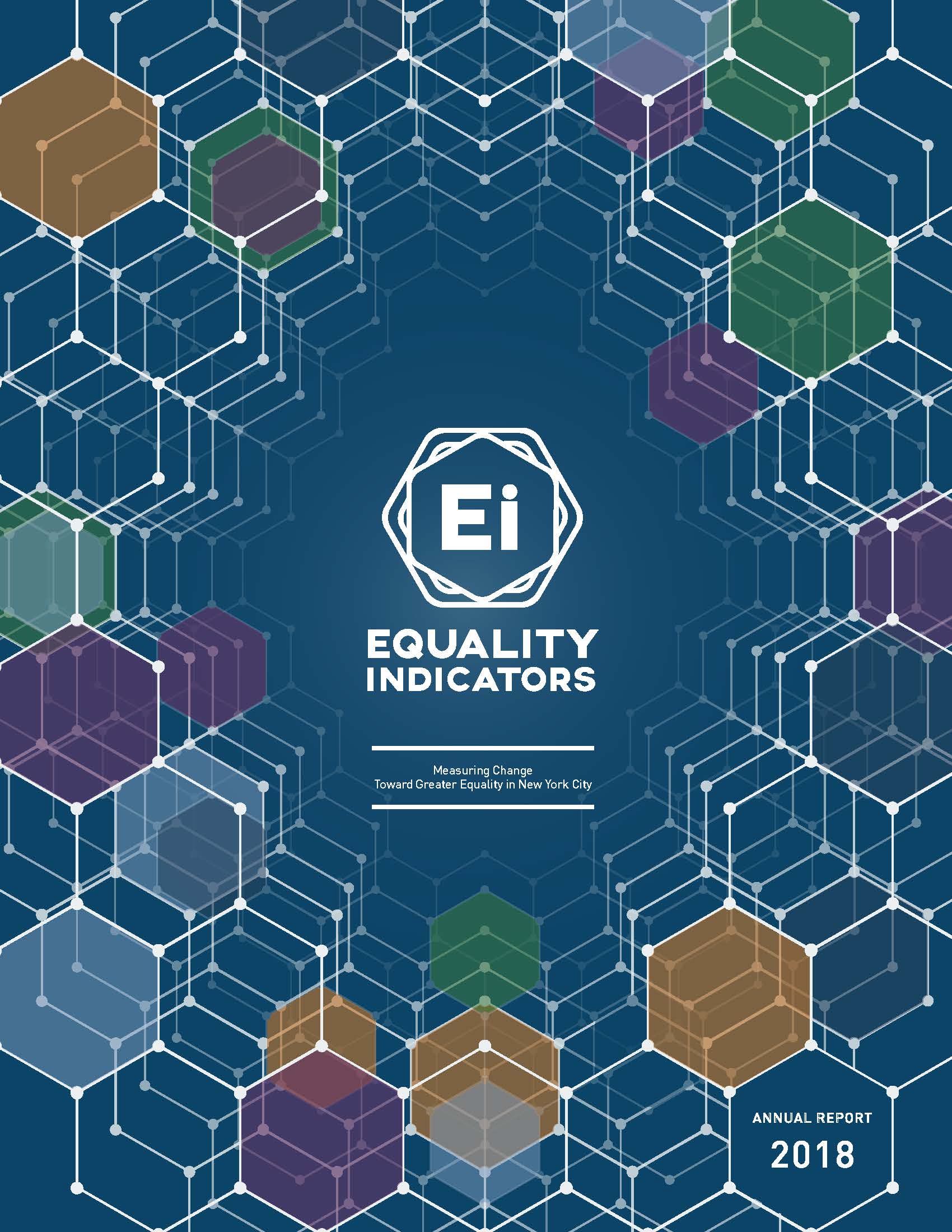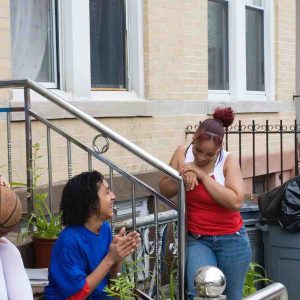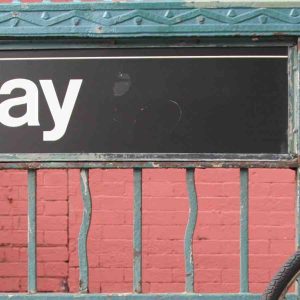2018 Score: 48.52 out of 100
Measuring progress toward greater equality in New York City
-
2018 NYC Equality Score Out Now! Change from Baseline +3.45
The 2018 NYC Equality Indicators Annual Report compares four years of data to measure NYC’s progress towards greater equality. Take a look at the Executive Summary and then read the full report here!
______________________________________________________________________________________________________________________
Initial scores released for all five new Equality Indicators cities!
Dallas, Oakland, Pittsburgh, St. Louis, and Tulsa have all released initial scores. Take a look at the announcement here and stay tuned for updates on their work!
-
What do we mean by equality?
Everyone has the same economic, educational, health, housing, justice, and service outcomes regardless of race, ethnicity, disability, sexual orientation, gender, single parenthood, age, immigration status, criminal record, place of residence, and other characteristics.
This definition is inspired by the UN Universal Declaration of Human Rights.
Read more about this project’s purpose.
How do we measure equality?
In NYC, we developed 96 indicators to measure progress towards equality across six thematic areas: Economy, Education, Health, Housing, Justice, and Services. Within each theme, we look at four specific topics. For example, within Education, we look at equality in early education, elementary and middle school education, high school education, and higher education. Finally, within each topic, we look at four unique indicators.
-
What is an indicator?
An equality indicator is a measure that compares outcomes of groups likely to experience inequalities, such as racial minorities, to groups less likely to experience them, such as whites.
In this sense, equality indicators are different from social indicators, which do not directly compare groups.
See the full list of indicators.
How are indicators reported?
Indicators are reported in numbers and narratives. Every year, we score the indicators on a scale of 1 to 100, where 1 represents inequality and 100 represents equality.
We compare current and baseline year scores to capture change over time. We group indicators and average their scores to create topic scores, and we group and average the topics to create theme scores.
Latest Blog Posts
-
Change Maker: Katherine Mella, MIT Community Innovators Lab and the Bronx Cooperative Development Initiative
The Bronx is home to some of the city’s most important institutions and industry hubs, such as the Bronx Zoo, the Bronx Botanical Gardens, many world-class hospitals and universities, and Hunt’s Point Terminal Market. Collectively, these institutions buy goods and...
Read More -
First National Evictions Database Sheds New Light on Affordable Housing Crisis
Across the United States, an estimated 3.7 million renters have faced eviction from their homes. In many of these cases, eviction is the result of missed rent payments. In some cases, landlords evict tenants because of property damage or other...
Read More
Explore the Themes, Topics, & Indicators
-
-
Poverty
- Race & Poverty
- Race & Food Security
- Citizenship Status & Poverty
- Family Composition & Poverty
-
Employment
- Race & Unemployment
- Disability & Unemployment
- Probation Status & Unemployment
- Employment Assistance
-
Income and Benefits
- Race & Income
- Income & Retirement Savings
- Immigration Status & Income
- Gender & Income
-
Business Development
- Race/Gender & City Contracts
- Race & Business Ownership
- Gender & Business Ownership
- Location & Business Revenue
-
-
-
Early Education
- Race & Pre-K Diversity
- Income & Child Care Facilities
- Income & Pre-K Quality
- Family Composition & Early School Enrollment
-
Elementary and Middle School Education
- Race & Math Proficiency
- Race & Principal Experience
- Income & School Safety
- Disability & English Proficiency
-
High School Education
- Race & Academic Performance
- Race & School Discipline
- Disability & On-time Graduation
- Income & On-Time Graduation
-
Higher Education
- Race & Degree Attainment
- Race & Post-Degree Employment
- Gender & Science Degrees
- Incarceration & Vocational Training
-
-
-
Access to Health Care
- Race & Health Insurance
- Race & Medical Care
- Income & Senior Flu Vaccination
- Immigration Status/Gender & Personal Doctor
-
Quality of Health Care
- Race & Asthma Hospitalization
- Race & Diabetes Hospitalization
- Race & Sexually Transmitted Diseases
- Income & Chronic Hepatitis B
-
Mortality
- Race & Cardiovascular Deaths
- Race & Infant Mortality
- Race & HIV-Related Deaths
- Income & Heroin Deaths
-
Wellbeing
- Race & Low Birthweight
- Race & Sugary Drink Consumption
- Income & Smoking
- Income & Exercise
-
-
-
Homelessness
- Recent Immigration & Youth Homelessness
- Child Homelessness Status & School Attendance
- Age & Homelessness
- Age & Length of Shelter Stay
-
Affordability of Housing
- Race & Severe Rent Burden
- Race & Homeownership
- Race & Home Purchase Loan Denial
- Sexual Orientation & Homeownership
-
Quality of Housing
- Race & Overcrowding
- Income & Heat/Hot Water
- Income & Vermin Infestation
- Public Housing & Murder
-
Neighborhood
- Race & Neighborhood Family Friendliness
- Income & Trust in Neighbors
- Income & Neighborhood Family Friendliness
- Sexual Orientation & Housing Stability
-
-
-
Safety and Victimization
- Race & Violent Victimization
- Race & Domestic Violence Homicide
- Foster Care Status & Child Abuse/Neglect
- Hate Crime Victimization
-
Fairness of the Justice System
- Race & Misdemeanor Arrest
- Race & Trust in Police
- Race & Jail Admissions
- Religion & Trust in Police
-
Political Power
- Race & Representation in Government
- Race & Representation in City Management
- Gender & Representation in Government
- Education & Political Empowerment
-
Civic Engagement
- Race & Voter Turnout
- Income & Voter Turnout
- Disability & Voting Access
- Location & Participatory Budgeting
-
-
-
Transportation
- Race & Commuting Time
- Disability & Subway Accessibility
- Disability & Taxi Accessibility
- Location & Bike Lanes
-
Parks and Recreation
- Income & Access to Parks
- Disability & Playground Accessibility
- Disability & Recreation Center Accessibility
- Location & Access to Senior Centers
-
Essential Needs and Services
- Race & Hot/Cold Running Water
- Race & Internet Access
- Immigration Status & Stove/Range
- Location & EMS Response Times
-
Arts and Culture
- Income & Funding for the Arts
- Location & Senior Access to the Arts
- Location & Public Library Availability
- Parental Education & Children’s Arts Participation
-







